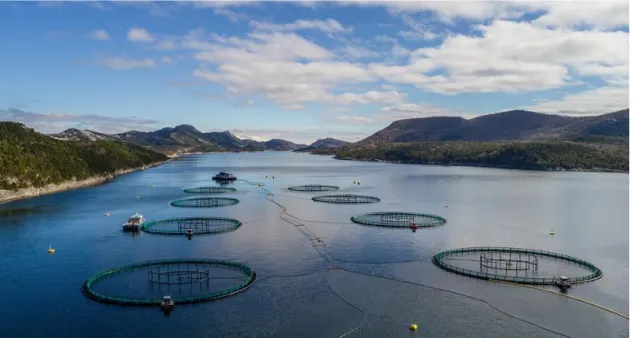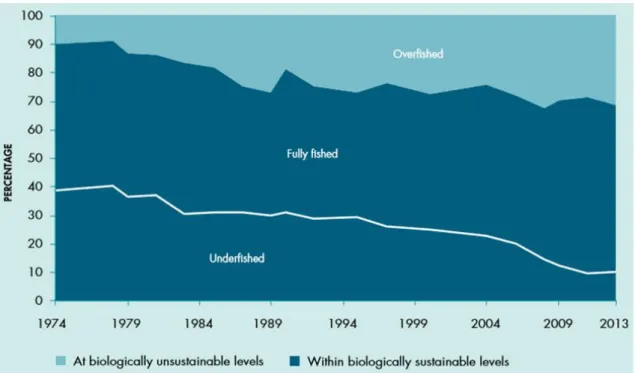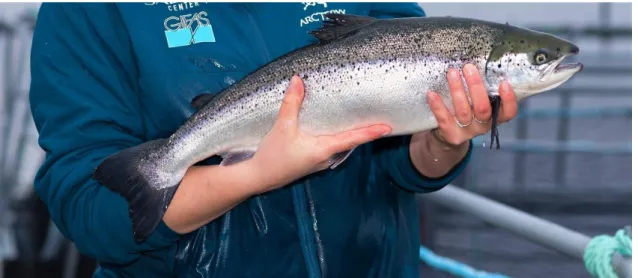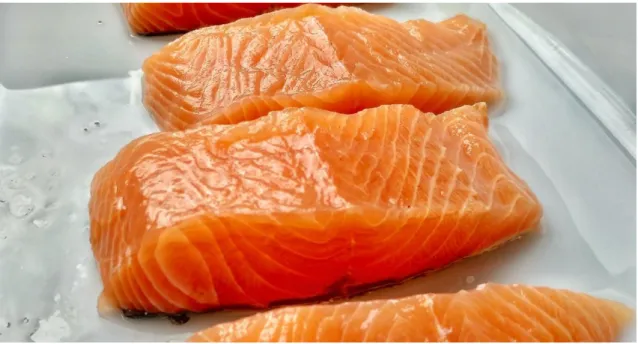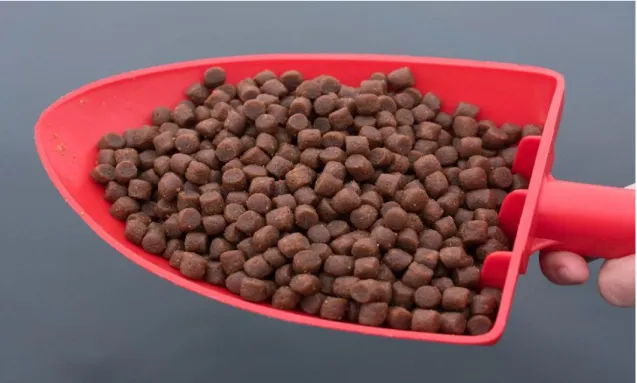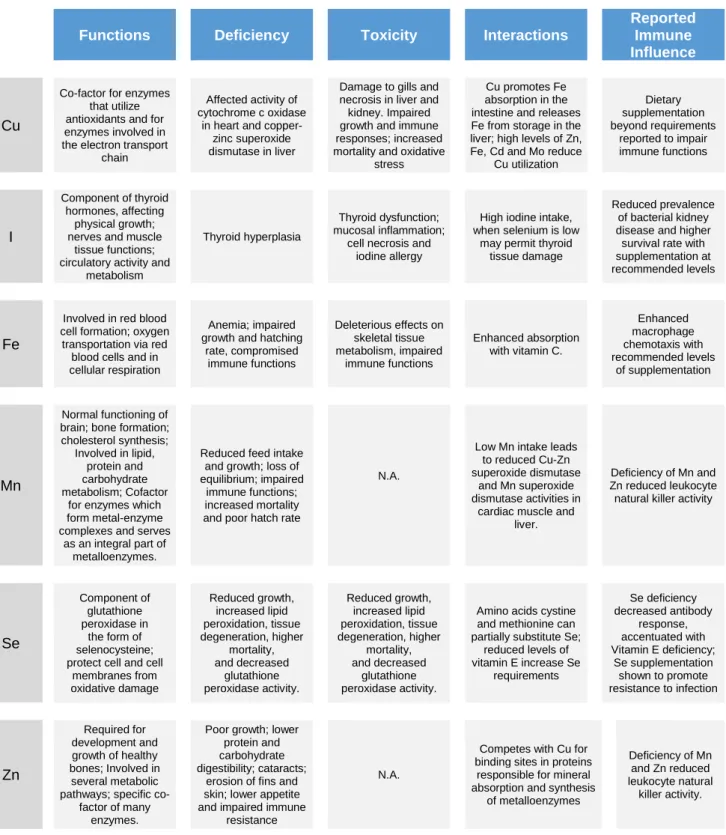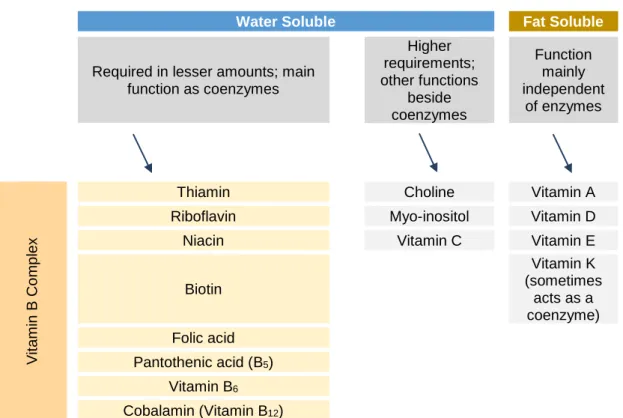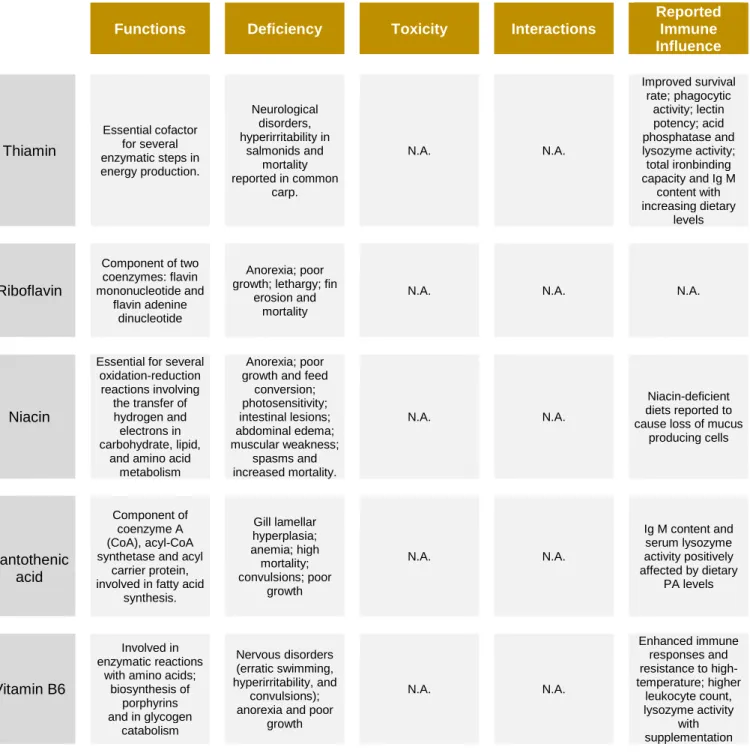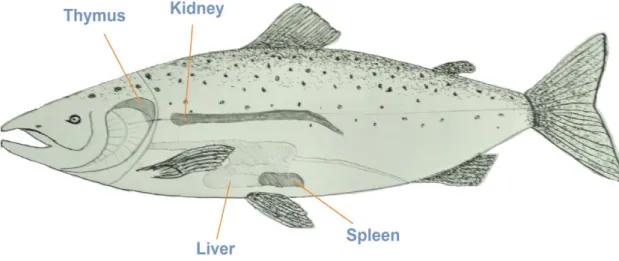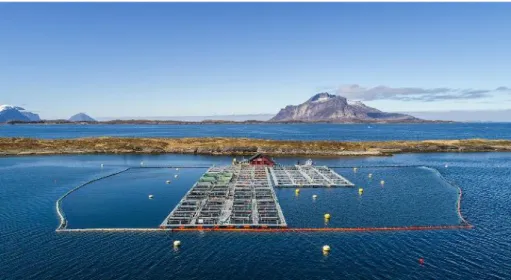IN ST IT U TO D E CI ÊN CI A S B IO M ÉD IC A S A BE L S A LA ZA R
Tia
go A
lbe
rto d
a S
an
ta L
op
es
. E
ffec
ts o
f d
ie
ta
ry m
icr
on
utr
ie
nt
s o
n
th
e A
tlla
nti
c s
alm
on
(
Sal
m
o s
alar
)) i
mm
un
e s
ta
tu
s.
Eff
ec
ts o
f d
ie
ta
ry m
icr
on
utr
ie
nt
s o
n t
he A
tla
nti
c
sa
lmo
n (
Sal
m
o s
alar
) imm
un
e s
ta
tu
s.
Tia
go A
lbe
rto d
a S
an
ta L
op
es
Effects of dietary micronutrients on the
Atlantic salmon (
Salmo salar
) immune
status.
Tiago Alberto da Santa Lopes
M
2017
M
.ICBAS
2017
MESTRADO EM CIÊNCIAS DO MAR - RECURSOS MARINHOS AQUACULTURA E PESCAS
TIAGO ALBERTO DA SANTA LOPES
EFFECTS OF DIETARY MICRONUTRIENTS ON THE ATLANTIC
SALMON (Salmo salar) IMMUNE STATUS
Dissertação de Candidatura ao grau de
Mestre em Ciências do Mar
– Recursos
Marinhos submetida ao Instituto de
Ciências Biomédicas de Abel Salazar da
Universidade do Porto.
Orientador – Doutor Benjamín Costas
Categoria – Investigador Auxiliar
Afiliação
– Centro Interdisciplinar de
Investigação Marinha e Ambiental
Co-orientador Doutor Johan Johansen
Categoria – R&D Manager
“Life is about courage and going into
the unknown”
v
Acknowledgments
This past year was full of experiences. Full of learnings, which made me grow and appreciate this World even more. It was a year that I couldn’t even dream of experiencing, unforgettable and life changing. I feel humbled and grateful for having all these experiences surrounding and involving my dissertation.
Firstly, because they are and always will be first, I thank my parents and my brother, José Alberto, Maria de la Salette and Luís Miguel the unconditional love, all the efforts and sacrifices. This dissertation is also yours, without you it wouldn’t have meant anything.
I thank my huge and fundamental family, which was difficult to leave despite being for some brief months. To “Mundo dos Lopes”, that really is a world, full of love, kindness, positivity and friendship. There is nothing similar, you are all unique. I thank you all, Arnaldo, Bruno, Francisco, Freitas, Hugo, Joana, Mina, Nuno, Regina, Ricardo, Sílvia, São, Zé, and I also thank, Antonieta and my grandparents Alberto and Armanda, who raised this fantastic family with such good values. I thank my precious family Santa for all the love and support that always gave me, always with positivity and kindness. I thank you Adelaide, Ana, António, Daniel, Duarte, Emília, Gonçalo, Pedro, Rosa, Sidónio and my dear grandparents, whom I hold dear in my heart, António Gonçalves and my dear Fátima Santa Gonçalves. I’m grateful for the love and support given by my godmother Manuela. You are all unique, amazing.
I thank Catarina Guimarães for all the unconditional support in the elaboration of this work and all the warmth and dedication given to me, not just now, but since we first met. You are genuine and truly wonderful, you deserve everything good life has to offer. You do make my life more colorful and bright. I thank your family for the kindness they’ve always shown me.
To you Ronald Jørgensen, I thank for always supporting me, in everything. You are a good friend, and there is no doubt that I see my future brighter after this experience in Norway. I appreciated every tour, every dinner, every talk and every glass of beer! I’m grateful for your care and friendship. Gildeskål is truly beautiful, thank you for showing me that.
vi
I thank Doutor Benjamín for all the advices and help with my writing, but more than that, for being a friend. Trusted me, listened to my interests and objectives and was able to create this amazing opportunity for me. You made everything in your reach to make this opportunity go forward. I’m grateful for your guidance, always with optimism and familiar spirit, which you transmitted and is seen in the amazing lab group, part of NUTRIMU.
I thank the excellent Professor Afonso, whom his personality and experience fascinated me, and for that reason I decided to talk to and tell about my ambition of going to Norway for my dissertation. I’m grateful for having listened to me and introducing me to Doutor Benjamín.
I’m grateful for the opportunity given by Doutor Luís Conceição in taking part of project ARRAINA. I hope I was up to the challenge. It was great working with you, together, during the samplings. Your charisma and positivity are contagious!
I thank Professor Eduardo Rocha for the guidance the advices given, and also for his efforts which helped me achieve this degree.
I thank all my friends for always being there for me. Life is brilliant when there are such good friends to share moments with. I thank Nuno Ferreira, a true brother, Sérgio Filipe, Pedro Fernandes, Christoph Donner, João André, João Miguel, João Farinha, and my new friends who made my experience in Norway an unforgettable and vibrant adventure. I thank you Kasper Beddari, for all the adventures, all the Northern Lights chases (I’m having the chills just by remembering them). I thank you Knut “the postman” Beddari for introducing me the wonders of mountain walks and post deliveries! I thank you Bjørn Ingebrigtsenj, Kaisa Beddari, Kjersti Meland, Monja Jakobsen for all the adventures and good moments. I thank Edvard Kjørsvik for being a friend, I did learn a great deal of work ethic and sacrifice with you. I thank Linn Fredriksen for being such a good friend and co-worker, for being there for me. I thank Johan Johansen for being a friend, being there when I needed most, for the helpful advices and review of my work. I thank you all for always supporting me, for proportionating me many smiles, and for showing me the wonders of Norway, which part of it is the people.
I thank Marina Machado and Sérgio Fernández, who were brilliant. You really helped me with all the laboratory techniques and advices for my thesis. I learnt a lot with you. Thank you. I also thank Lourenço Pinto, Rita Azeredo, Filipa Fontinha, Bruno Reis, Francisco
vii
Guardiola, Joana Moura and Paulo Santos for the incredible atmosphere in the lab. I also thank Doutora Helena Peres for having guided me in my first step in the aquaculture world, making me enjoy even more this amazing field of research.
To all GIFAS staff, amazing people with whom I shared great moments and learnings, I thank you. I like you all and consider you all dear friends, and I know you do to.
I thank my awesome masters class! More than colleagues, you are my friends. Carlota, it’s amazing how well we work as a team! This masters was awesome and part of it was thanks to you. Thank you for being such an amazing friend. And thank you class for listening me talk about my will to go to Norway for one entire year! I made it! :D
This work was partially supported by the ARRAINA project N288925: Advanced Research Initiatives for Nutrition & Aquaculture under the EU seventh Framework Programme, the Strategic Funding UID/Multi/04423/2013 and the Structured Program of R&D&I INNOVMAR - Innovation and Sustainability in the Management and Exploitation of Marine Resources, reference NORTE-01-0145-FEDER-000035, namely within the Research Line INSEAFOOD Innovation and valorization of seafood products: meeting local challenges and opportunities, through national funds provided by FCT - Foundation for Science and Technology, COMPETE—Operational Competitiveness Programme and European Regional Development Fund (ERDF), supported by the Northern Regional Operational Programme (NORTE2020), through the European Regional Development Fund (ERDF), and in the framework of the programme PT2020.
ix
Resumo
Os micronutrientes, tais como os minerais e as vitaminas, regulam vários processos fisiológicos, sendo críticos para o crescimento e desenvolvimento normal, desempenhando também um papel importante na resistência imunitária. A suplementação adequada de micronutrientes pode potenciar a imunidade dos peixes por fornecer recursos adicionais que cobrem os requerimentos destes nutrientes no caso de uma infeção, e assim, melhorar a capacidade dos peixes em responder a uma doença.
Este estudo teve como objetivo compreender melhor a influência imunoestimulante da suplementação de micronutrientes em certos parâmetros humorais e celulares do plasma de salmão do Atlântico (Salmo salar). Neste projeto foram testadas 3 dietas isoazotadas (46.28% proteína bruta) e isolipídicas (22.68% gordura bruta) com diferentes composições de micronutrientes: COM, uma dieta comercial suplementada com um premix de micronutrientes comercial (0.6% da dieta), que serviu como controlo; 100NP, uma dieta com inclusão de um premix de micronutrientes formulado com as recomendações em suplementação de micronutrientes (0.6% da dieta) do NRC (2011); e a NEWNP, uma dieta suplementada com um premix de micronutrientes (0.6% da dieta) baseado nos níveis ótimos sugeridos pelos resultados obtidos no projeto europeu ARRAINA. Após o ensaio de crescimentos de 14 semanas, com o peixe a ser alimentado com as 3 dietas experimentais, foram amostrados 40 salmões do Atlântico por tratamento.
Verificou-se uma tendência para uma maior taxa de crescimento específico nos peixes alimentados com a dieta NEWNP, que vai de acordo com um possível aumento da capacidade antioxidante estimulada pelo premix da NEWNP.A dieta NEWNP parece ter potenciado efeitos positivos no estado imunitário do salmão do Atlântico. O peixe alimentado com a dieta NEWNP mostrou uma tendência para maiores números relativos de neutrófilos e monócitos. Além disso, os peixes alimentados com a dieta NEWNP tiveram atividade de complemento significativamente maior em relação aos peixes alimentados com a dieta COM, e também mostraram uma atividade da lisozima significativamente maior que os peixes do tratamento com a dieta 100NP. Adicionalmente, o tratamento com NEWNP pareceu ter promovido a atividade bactericida do plasma, mostrando uma tendência para maior atividade quando comparado com plasma de salmões alimentados com as outras dietas.
Resumidamente, a suplementação de micronutrientes parece ter uma influência direta na imunidade dos peixes. Uma suplementação adequada de certos micronutrientes pode ser a chave para desenvolver rações funcionais eficientes, atuando como medidas profiláticas ao equipar os peixes com recursos para poderem combater doenças com
x
sucesso. De entre as 3 dietas, o premix incluído na dieta NEWNP pareceu ter sido o que mais potenciou certos parâmetros imunitários.
Palavras-chave: salmão do Atlântico; modulação imunitária; micronutrientes; parâmetros celulares
xi
Abstract
Micronutrients such as minerals and vitamins mediate several physiological processes, being critical to normal growth and development, and have a key role in immune resistance. Adequate supplementation of micronutrients can boost fish immunity by supplying additional tools to cover these nutrients demand in case of an infection, hence, improving fish’s ability to cope with an insult.
This study aimed to better understand the immunomodulatory influence of dietary micronutrients supplementation on selected cellular and humoral plasma immune parameters of Atlantic salmon (Salmo salar). For this purpose, 3 isonitrogenous (46.28% crude protein) and isolipidic (22.68% crude fat) diets were tested with different micronutrient compositions: COM, a commercial diet supplemented with a commercial micronutrient premix (0.6% total diet), serving as control; 100NP, a diet formulated with a micronutrient premix (0.6% total diet) following NRC (2011) guidelines on adequate micronutrient supplementation; and NEWNP, a diet supplemented with a micronutrient premix (0.6% total diet) following the optimum levels suggested from the results obtained in ARRAINA’s EU project. After a 14 weeks growth trial with fish being fed the 3 experimental diets, 40 Atlantic salmon were sampled per dietary treatment.
A tendency for higher specific growth rate of fish fed with NEWNP diets was observed, and could be related with an enhanced antioxidant capacity stimulated by NEWNP micronutrient premix.
The NEWNP treatment appeared to have encouraged positive effects on Atlantic salmon’s immune status. Fish fed with NEWNP showed a tendency for higher neutrophil and monocyte relative numbers. In addition, fish fed the NEWNP diet also showed a significantly higher complement activity comparing to fish fed COM. The NEWNP diet also increased significantly the lysozyme activity in salmon compared to fish fed the 100NP dietary treatment. Furthermore, the NEWNP treatment appears to enhance bactericidal activity in plasma, showing a tendency for higher activity comparing to the other treatments.
In brief, micronutrients dietary supplementation appears to have a direct influence on fish immunity. Adequate supplementation of certain micronutrients appears to be a good alternative to develop effective functional feeds, thus acting as prophylactic strategy by providing fish with resources to successfully cope with diseases. Among the 3 dietary treatments, the NEWNP premix seemed to have been the one that most enhanced certain immune parameters.
xii
Keywords: Atlantic salmon; aquaculture; immunomodulation; micronutrients; cellular and humoral
xiii
Table of Contents
Acknowledgments ...v
Resumo... ix
Abstract ... xi
Table of Contents ... xiii
List of figures and tables ... xv
Introduction ... 1
Fish demand: Aquaculture and Fisheries ... 1
Atlantic Salmon: Species and production aspects ... 3
Production: Worldwide; European and Norwegian ... 3
Species: Lifecycle ... 4
Aquaculture feeds: Sustainability ... 5
Micronutrients: Minerals and Vitamins ... 7
Minerals: Trace elements ... 7
Cobalt ... 8 Copper ... 8 Iodine ... 9 Iron ... 9 Manganese ... 10 Selenium ... 10 Zinc ... 11 Vitamins ... 13
Fish Immune System: Innate and adaptive immunity ... 15
Innate Immunity ... 17
Adaptive Immunity ... 18
Lymphocytes ... 18
Nutritional Immunology ... 20
Objectives………...21
Material and Methods ... 23
Locations ... 23 Experimental design ... 24 Experimental diets………25 Sampling ... 27 Growth performance………27 Haematological Assays ... 28
(a) Preparation and observation of stained blood smears ... 29
Humoral Analytical techniques ... 30
(b) Alternative complement pathway activity ... 30
(c) Anti- protease activity ... 31
(d) Bactericidal activity ... 32
(e) Lysozyme activity ... 33
(g) Peroxidase activity ... 34
(h) Total protein and Immunoglobullins ... 34
xiv Results ... 37 Growth performance………37 Haematological assays ... 37 Humoral assays ... 38 Discussion ... 41 Conclusion ... 43 References ... 45
xv
List of figures & tables
Figure 1 – GIFAS large scale production site for Atlantic salmon ... 1
Figure 2 – “Global trends in marine fish stocks since 1974” ... 2
Figure 3 – Adult Atlantic Salmon ... 3
Figure 4 – Atlantic Salmon loins ... 4
Figure 5 – Atlantic salmon feed ... 5
Figure 6 – Representation of thymus; kidney; liver and spleen in salmonids ... 16
Figure 7 – Gildeskål Forskningsstasjon AS (GIFAS) small scale R&D facilities. ... 23
Figure 8 – Centro Interdisciplinar de Investigação Marinha e Ambiental (CIIMAR). 23 Figure 9 – 5x5m cages at GIFAS’ Small Scale R&D ... 24
Figure 10 – Checking for dead fish ... 25
Figure 11 – Tubes for collection of blood. ... 28
Figure 12 – Stains for blood smear staining... 28
Figure 13 – Monocyte; Thrombocyte; Neutrophil; Lymphocyte ... 29
Figure 14 – Eppendorf microtubes with plasma samples ... 30
Figure 15 – 96-well microplates used for ACP activity assay ... 31
Figure 16 – Material used for bactericidal activity assay ... 32
Figure 17 – 96-well microplates used in Peroxidase test ... 34
Figure 18 – Microplates ready for the Kits’ reagent addition ... 35
Figure 19 – Relative proportion of neutrophils among fish fed dietary treatments. .. 38
Figure 20 – Lysozyme activity in Atlantic salmon fed with 100NP; NEWNP and COM diets ... 39
Figure 21 - Bactericidal activity in Atlantic salmon fed with 100NP; NEWNP and COM diets ………39
Figure 22 - ACH50 (Complement activity) in Atlantic salmon fed with the 3 dietary treatments……….……….40
xvi
Table 1 – Summary of several aspects concerning relevant minerals for this study. ... 12 Table 2 – Vitamins’ categories ... 13 Table 3 – Summary of several aspects concerning relevant vitamins for this study. ... 14 Table 4 - Composition and proximate analysis of the experimental diets………….…...26 Table 5 - Growth performance indicators (SGR; TGC; FCR) for Atlantic salmon fed with the experimental diets………...………37 Table 6 – Relative proportion of peripheral leucocytes (thrombocytes; lymphocytes; monocytes) in Atlantic salmon fed dietary treatments. ... 38 Table 7 – Innate immune parameters assayed in Atlantic salmon fed dietary treatments. ... 39
1
Introduction
Fish demand:
Aquaculture and Fisheries
The need for rising animal protein intake motivated by populational growth, urbanization and economic development has driven the growing demand for fish. World’s fish consumption per capita increased from 9.9 kg in 1960 to estimated values exceeding 20 kg in 2015, accounting for 17% of global animal protein intake in 2013 (FAO 2016a). This future demand will be met mainly by growth in aquaculture production since fisheries production have remained rather stable, exhibiting a declining growth trend, and are expected to continue that way, since natural fish stocks are currently in a critical status, in part due to fisheries overexploitation. In fact, an alarming 31.4% of marine fish natural stocks were estimated to be fished at unsustainable levels in 2013 (figure 2), and 58.1% fished at maximum sustainable capacity in the same year (FAO 2016a).
Figure 1 – GIFAS large scale production site for Atlantic salmon,
2
Figure 2 – “Global trends in marine fish stocks since 1974”. Source: (FAO 2016a)
In contrast, aquaculture production, the fastest growing food sector, has been increasing production at an average rate of 6.2% between 2000 and 2012 while in the same period total capture landings decrease at an average of 2.4% (Mathiesen 2012, Tacon and Metian 2013). In 2014, aquaculture reached a milestone, when for the first time supplied more fish for human consumption than fisheries, highly attributable to the remarkable growth in emerging countries (FAO 2016a).
A notable year for worldwide aquaculture was 2014. Production of aquatic animals in 2014 surpassed 73 million tonnes from which, 49.8 million tonnes were attributed to finfish production, valued over 99 billion US$ (FAO 2016b). In the same year, Europe’s total finfish production comprised 2.3 million tonnes, representing 78.4% of all aquatic animal aquaculture in Europe, followed by molluscs production (21.6 %). The main contributor for Europe’s finfish production was Norway, with a total production of over 1.3 million tonnes, being the principal supplier of aquaculture products in EU (FAO 2016a, FAO 2016b). Virtually all finfish aquaculture in Norway belongs to Atlantic salmon farming. In 2014 Atlantic salmon represented 94.5% of total aquaculture production in Norway, placing Norway as the 6th major aquaculture producer worldwide (OECD 2017). These remarkable values highlight the major contribution of Norwegian Atlantic salmon in the supply of highly nutritious food for human consumption.
3
Atlantic salmon:
Species and production aspects
Figure 3 – Adult Atlantic salmon.
Production:
Worldwide; European and Norwegian
Virtually all Atlantic salmon supply comes from aquaculture and thus is a significant aquaculture species produced worldwide, either in terms of value as in quantity. In 2014, Atlantic salmon aquaculture produced 2 326 288 Tonnes with a value of 14 667 620 000 $, whereby 54% of the total farming production was attributed to Norway (FAOa 2016, FAOb 2016). Chile, Scotland, Canada and the Faroe Islands are also important producers of Atlantic salmon. Production of this species has been increasing at an annual growth of 8% since 1995, but it’s expected to grow at a rate of 3% from 2016 to 2020 since production is reaching a level where biological boundaries are being pushed and further development must be made in sustainable manner (Marine Harvest 2017). Even though, demand is growing steadily and new markets are opening through new ways of processed products, and Norwegian salmon is expected to have a growing share in the major markets (FAOa 2016).
Salmon aquaculture is well developed. Broodstock is bred with selection of key features such as growth performance and disease resistance. After stripping the eggs from females, the eggs are fertilized by mixing with milt and incubated. After 4-5 weeks, depending on temperature, the eggs start showing the eyes. When hatched, the alevins will absorb their yolk sack, after which they will start feeding and will grow into fry and then parr to around 60-100 g where they will start the process of smoltification and adapt to saltwater conditions.
4
This freshwater cycle lasts between 10 to 16 months. Smolts are then transported to cages in seawater, for the grow out period that can last between 14-24 months depending on water temperature, where they grow to around 4-5 kg. When fully grown to market size, the salmon is transported to processing sites where it’s slaughtered and gutted (Marine Harvest 2017).
Figure 4 – Atlantic salmon loins
Species:
Lifecycle
The species selected for this project was the Atlantic salmon Salmo salar (Linnaeus, 1758) (Figure 3). The Atlantic salmon is an anadromous fish naturally found in the North Atlantic coast of Europe and the rivers flowing into it, from Finland to Portugal. The spawning occurs in autumn season. The eggs are laid, fertilized and then covered with gravel, forming a redd, in clean and oxygenated streams. After spawning many salmons die. After 400-450 degrees-days (sum of water daily temperatures ºC) the eggs hatch, being called alevins, that feed between 4 to 6 weeks on the yolk sack. After the yolk sack is depleted, salmon swim up to surface to gulf air and fill the swimming bladder, becoming active swimmers called “fry”, where they start to feed on small insect larvae. Fry develop into “parr” over the autumn, gaining vertical stripes and spots for camouflage, staying in their stream between 1 to 5 years, after which a process of physiological pre-adaptation to seawater conditions, called smoltification, starts. Smolts then start their journey to the sea during spring where they grow and mature, becoming fully developed adults, remaining in the ocean for 1 or more years, eating small pelagic fish, krill and sand eels. When they
5
become sexually mature, they return to the rivers where they were born to reproduce, during the autumn season, closing the cycle. Adult males can be distinguished from females as the previous have a lower hooked jaw.
Aquaculture feeds:
Sustainability
Figure 5 – Atlantic salmon feed.
The remarkable growth in aquaculture raised concerns in terms of its environmental impact and sustainability, such as the reliance on fisheries input, as fishmeal and fish oil from small pelagic captured fish are still very commonly used ingredients in aquafeeds in particularly for shrimp and some marine fish such as salmon (Deutsch et al. 2007, Tacon and Metian 2008). Although fish meal and fish oil are considered the most nutritious and digestible ingredients for farmed fish, their use as fish feeds has been clearly decreasing, much due to the critical status of fisheries and competition for human consumption, consequently resulting in higher prices of the ingredients (Gatlin et al. 2007, Tacon and Metian 2015, Bene et al. 2016, FAO 2016a). Due to the limited availability and consequent increasing prices, fish meal and fish oil, traditionally used as main ingredients in salmonids feeds, have seen an incredible decrease, where the percentage of marine ingredients used in salmonid feeds declined from 90% in 1990 to 30% in 2013 with further reduction expected. This reduction in feeds’ marine input, made Norwegian farmed Atlantic salmon a net producer of marine protein, as seen in 2013 where 0.7 kg of marine protein was used
6
to produce 1 kg of salmon protein (Ytrestøyl et al. 2014, Ytrestøyl et al. 2015). Significant decrease of fish derived ingredients in aquafeeds was mainly achieved by replacement of these commodities by more economical and environmentally sustainable alternative ingredients such as plant sources. (Gatlin et al. 2007, Tacon and Metian 2008, Castillo and Gatlin 2015). However, plant based feedstuffs usually carry a variety of setbacks when compared to fish derived nutrients, such as lower palatability, unbalanced amino acid profiles, and lower bioavailability of certain micronutrients and minerals, and can prejudice diet-effectiveness, particularly in carnivorous marine species (Gatlin et al. 2007, Glencross et al. 2007). Furthermore, plant based feeds have several antinutritional factors (ANFs) that disturb nutrient digestion and absorption, and can negatively affect fish metabolism, health and immunological status, reducing feed efficiency and ultimately fish performance and welfare (Krogdahl et al. 2010, Sinha et al. 2011, Oliva‐Teles 2012, Castillo and Gatlin 2015, Magalhaes et al. 2016). In fact, it is generally recommended to supplement Iron (Fe); Copper (Cu); Manganese (Mn); Zinc (Zn) and Selenium (Se) to fish feeds due to their low and variable levels in practical feed constituents and to possible interactions with vitamins and other diet components which may affect their bioavailability (Watanabe et al. 1997).
A lot of research effort has been made in aquaculture nutrition in the last decades. Despite the recognition of the essential role of minerals for various life processes, research on mineral and trace element in fish nutrition has advanced relatively slow. Indeed, about 29 of the 90 naturally occurring inorganic elements are considered to be essential for all farmed animals including fish (Lall and Milley 2008), but only a few of them have thoroughly studied in fish species. With increasingly higher inclusions of vegetable sources, it is important to understand micronutrients requirements and their modulatory properties to allow better feed formulations and thus, better farming results.
7
Micronutrients:
Minerals and Vitamins
Minerals:
Trace elements
All animals require mineral intake to sustain normal physiological functions, and fish are no different (Davis and Gatlin 1996, Watanabe et al. 1997). Structural and functional properties are widely dependent on certain essential inorganic elements as all living organisms are constituted by organic and mineral elements. Fish can meet their inorganic requirements resorting to dietary intake and, unlike animals, by absorption of minerals present in the surrounding water via gills (Davis and Gatlin 1996, Watanabe et al. 1997, Bury et al. 2003, Terech-Majewska et al. 2016). Dietary requirements are established for macro-minerals such as calcium, potassium, magnesium, sodium and phosphorus and microminerals such as Cu, Fe, iodine (I), Mn, Se and Zn for one or more fish species (NRC 2011). Efficiency in the utilization of dietary inorganic elements are reliant on their bioavailability. This bioavailability depends on various settings such as feed source, diet composition and digestibility, being also influenced by nutrient interactions that may be synergistic or antagonistic, and by physiological status of the fish and species (Watanabe et al. 1997). Biochemical factors also play a role in mineral bioavailability since these inorganic elements can assume different molecular forms and compete among them for favourable binding sites, which may promote or impair mineral transportation and metabolism. In addition, environmental settings can also influence the bioavailability of minerals (Watanabe et al. 1997).
Indeed, high inclusion of plant sources in aquafeeds raise concerns in terms of dietary micronutrient as those dietary sources have low levels of bioavailable minerals such as Zn, Fe and Se (Standal et al. 1999, Hunt 2003, Prabhu et al. 2016). Hence, supplementation of micronutrients such as Fe, Cu, Mn, Zn and Se are usually advised (Watanabe et al. 1997, Prabhu et al. 2016). Moreover, ANFs may impair feed utilization, growth and health status of the animals after ingesting plant derived ingredients (Makkar 1993, Francis et al. 2001). Having bioavailable minerals that meet dietary requirements is crucial, as these essential nutrients play vital roles such as catalytic functions in metalloenzymatic processes. For instance, the functional role of Zn is known to be associated with the activities of alkaline phosphatase (ALP), Cu–Zn superoxide dismutase (SOD) and carbonic anhydrase, while Mn is linked to Mn-SOD activity (Prabhu et al. 2016).
8
Cobalt
Cobalt (Co) is a trace element component of vitamin B12 (cyanocobalamin) and is crucial for vitamin synthesis by the intestinal microflora (Watanabe et al. 1997). It is associated to nitrogen assimilation, and haemoglobin formation and protein in muscle, and indeed dietary Co can lead to a better haematological status of fish, increased protein synthesis and efficiency and improved growth (Watanabe et al. 1997).
Co can also be absorbed from surrounding water through gills in the form of Co chloride, being improved by higher water temperatures and impaired by calcium content in water (Watanabe et al. 1997, Terech-Majewska et al. 2016).
Excessive levels of Co can lead to toxic effects, haemorrhages in the digestive tract and alterations in leucocytes (Watanabe et al. 1997).
Copper
Copper (Cu) is an essential element for fish and other organisms (Watanabe et al. 1997, Lorentzen et al. 1998, Shao et al. 2010). Although waterborne Cu can be absorbed by fish via gills, it is not enough to meet this trace element requirements and thus dietary Cu is needed (Lin et al. 2008, Shao et al. 2010, Terech-Majewska et al. 2016). It is important for several life processes such as haematopoiesis and collagen synthesis (Shao et al. 2010, Meng et al. 2016). It has a key role in antioxidant enzymes (e.g. Cu–Zn SOD), in several copper dependent enzymes, and is involved in oxidation–reduction reactions (Davis and Gatlin 1996, Watanabe et al. 1997, Lorentzen et al. 1998).
Dietary Cu is mostly found in the form of sulphate salt (CuSO4) (Shao et al. 2010). Cu absorption is affected by several aspects such as physiological status of fish, copper content in water, and interaction with other mineral elements such as Zn, Fe, Cadmium (Cd) and molybdenum (Mo), as these are antagonists of Cu and compete for binding sites on proteins with role in mineral absorption and on metalloenzyme synthesis proteins (Watanabe et al. 1997).
Excessive levels of Cu can lead to impaired immune functions and growth, decreased feed intake and feed conversion efficiency, low haematocrit levels and can even cause harmful effects in the gills (Watanabe et al. 1997, Terech-Majewska et al. 2016).
9
Iodine
Iodine (I) is present in nearly every animal tissue, being noticeably rich in marine species. It can be absorbed from water or via dietary components (Davis and Gatlin 1996, Terech-Majewska et al. 2016). It is important in thyroid hormones, that regulate fish metabolism and influence cellular oxidation, neuromuscular functions, hematopoiesis, circulation, nutrient efficiency and growth (Davis and Gatlin 1996, Watanabe et al. 1997).
I deficiency has been reported to cause thyroid hyperplasia, and excessive I uptakes has been associated thyroid dysfunction, mucosal inflammation, cell necrosis and iodine allergy (Watanabe et al. 1997, Terech-Majewska et al. 2016).
Iron
Iron (Fe) is a micromineral essential for many physiological processes. It is involved in oxidation/reduction reactions, cellular respiration, DNA synthesis, haematopoiesis, and it has an important role in immune functions (Davis and Gatlin 1996, Watanabe et al. 1997, Kiron 2012, Terech-Majewska et al. 2016). It is a major component of haemoglobin and its main transport form in the body is through a protein-bound complex, transferrin. Although Fe can be absorbed to some extent via gills epithelium, the intestinal mucosa is the major absorption area (Watanabe et al. 1997, Terech-Majewska et al. 2016).
Dietary Fe can be categorized in two major types, non-heme Fe, found in plant ingredients and animal tissues, and heme-Fe, present in haemoglobin and myoglobin in animal tissues (Hurrell and Egli 2010). Fe absorption depends on its chemical form and it can be enhanced in the presence of certain dietary components such as amino acids, vitamin C and fructose, on impaired by diets containing phytates, oxalates and phosphates, such as plant-based diets. Other minerals can also interact with Fe and impair its absorption, such as calcium. (Hurrell and Egli 2010, Prabhu et al. 2016).
Deficiency in Fe uptake can lead to anaemia, characterized by a drop in haemoglobin content and low erythrocyte counts and resulting poor growth and poor hatching rates (Davis and Gatlin 1996, Watanabe et al. 1997). On the other hand, excessive Fe uptake can be toxic, and affect optimum growth. Fe has a key role in lipid oxidation and catalyses formation of hydroperoxides and free radical peroxides in the presence of unsaturated fatty acids and oxygen, which can affect stability of marine fish diets, rich in polyunsaturated fatty acids through lipid oxidation leading to rancidity and reduce vitamin C stability (Davis and Gatlin 1996).
10
Manganese
Manganese (Mn) is an important element for fish, and is found in nearly every tissue (Watanabe et al. 1997). It has an essential role for several physiological functions such as normal brain function, fatty acid, amino acid and carbohydrate metabolism (Davis and Gatlin 1996, Watanabe et al. 1997). It has a key role as cofactor for enzymes that form metalloenzymes, and as an integral piece of metalloenzymes. Mn has been shown to activate several enzymes such kinases, transferases, hydrolases and leucine aminopeptidases (Watanabe et al. 1997).
Although some absorption can be performed via gills, dietary Mn is the main source of the nutrient and is more bioavailable in the form of Mn sulphate or Mn chloride than Mn carbonate. Its bioavailability is impaired by higher dietary calcium and phosphorus levels (Watanabe et al. 1997, Terech-Majewska et al. 2016).
Low dietary levels of this element have been reported to cause poor feed intake and growth, low hatching rates, skeletal deficiencies, cataracts, and increased mortality (Davis and Gatlin 1996, Watanabe et al. 1997). On the other hand, Mn sulphate has been reported to promote higher weight gain, protein synthesis and decrease liver lipid synthesis (Watanabe et al. 1997, Terech-Majewska et al. 2016).
Selenium
Selenium (Se) is an essential element for fish found in selenocysteine, situated in the active site of Se dependent proteins (selenoproteins) (Brigelius-Flohé 1999, Hamre et al. 2016). It is a component of glutathione peroxidase, which destroys hydrogen peroxides and hydroperoxides, protecting host cells and membranes from harmful peroxide effects that would otherwise cause lipid oxidation. Se also acts along with vitamin E to prevent muscular dystrophy. Additionally, Se has a role in protecting host from heavy metal toxicity by forming complexes them (Davis and Gatlin 1996, Watanabe et al. 1997).
Fish can utilize waterborne and dietary Se. It has been reported to interact with other elements, such as Cu, reducing metabolically activity and availability of both minerals. These two elements have been shown to form Se-Co complexes through selenoproteins (Watanabe et al. 1997). Sodium selenite has been described as the most used and efficient form of inorganic dietary Se for fish (Prabhu et al. 2016).
Deficiencies in Se uptake can be harmful as is has been reported that low dietary levels of this element in salmon feeds led to lethargy, loss of appetite, reduced muscle tone, low haematocrit levels, myocardial degeneration, impaired growth and mortality (Watanabe et
11
al. 1997). In contrast, extreme levels of the mineral can convey harmful effects, with subsequent reduced growth, feed efficiency and increased mortality. (Watanabe et al. 1997).
Zinc
Zinc (Zn) is a vital micromineral in fish nutrition involved in several metabolic processes. It has structural and catalytic role in above 300 proteins important in fish growth, reproduction, development, and immunity (Kiron et al. 1993, Watanabe et al. 1997, Bury et al. 2003). It is an fundamental piece of around 20 metalloenzymes such as ALP, alcohol dehydrogenase and carbonic anhydrase (Watanabe et al. 1997).
Zn can be derived from surrounding water as from feed intake, the latest being more bioavailable (Watanabe et al. 1997, Terech-Majewska et al. 2016). Its dietary availability is affected by its chemical form, source of protein and presence of other feed constituents such as calcium, phosphorus and phytic acid (highly present in plant based feeds) (Davis and Gatlin 1996, Watanabe et al. 1997). Zn is also antagonist of Cd and Cu, and its absorption can also be reduced by calcium and magnesium (Brucka-Jastrzebska et al. 2010, Terech-Majewska et al. 2016).
Zn deficiency has been reported to cause poor growth, lower protein and carbohydrate digestibility, cataracts, erosion of fins and skin, lower appetite, and impaired immune resistance (Davis and Gatlin 1996, Watanabe et al. 1997). Alternatively, too-high levels of Zn can decrease growth and haematocrit levels (Watanabe et al. 1997).
Minerals are directly associated to immune functions, and imbalances in micromineral intake can compromise the fish immune status (Lim et al. 2001, Kiron 2012). Expanding the knowledge of immunomodulatory properties of minerals, and microminerals particularly, is essential in advancing its use as a sustainable and viable strategy for successful aquaculture.
A summary of several functions, symptoms caused by excessive and deficient dietary levels, interactions among several nutrients and reported effects on immune responses concerning relevant trace-elements for this study is presented below (table 1).
12
Table 1 – Summary of several aspects concerning relevant minerals for this study.
Functions Deficiency Toxicity Interactions
Reported Immune Influence
Cu
Co-factor for enzymes that utilize antioxidants and for enzymes involved in the electron transport
chain
Affected activity of cytochrome c oxidase
in heart and copper-zinc superoxide dismutase in liver
Damage to gills and
necrosis in liver and kidney. Impaired growth and immune responses; increased mortality and oxidative
stress
Cu promotes Fe
absorption in the intestine and releases Fe from storage in the liver; high levels of Zn, Fe, Cd and Mo reduce
Cu utilization Dietary supplementation beyond requirements reported to impair immune functions I Component of thyroid hormones, affecting physical growth; nerves and muscle
tissue functions; circulatory activity and
metabolism Thyroid hyperplasia Thyroid dysfunction; mucosal inflammation;
cell necrosis and iodine allergy
High iodine intake, when selenium is low
may permit thyroid tissue damage
Reduced prevalence
of bacterial kidney disease and higher survival rate with supplementation at recommended levels Fe
Involved in red blood cell formation; oxygen
transportation via red blood cells and in cellular respiration
Anemia; impaired growth and hatching
rate, compromised immune functions Deleterious effects on skeletal tissue metabolism, impaired immune functions Enhanced absorption with vitamin C. Enhanced macrophage chemotaxis with recommended levels of supplementation Mn Normal functioning of brain; bone formation; cholesterol synthesis;
Involved in lipid, protein and carbohydrate metabolism; Cofactor
for enzymes which form metal-enzyme complexes and serves
as an integral part of metalloenzymes.
Reduced feed intake and growth; loss of equilibrium; impaired
immune functions; increased mortality and poor hatch rate
N.A.
Low Mn intake leads to reduced Cu-Zn superoxide dismutase
and Mn superoxide dismutase activities in
cardiac muscle and liver.
Deficiency of Mn and Zn reduced leukocyte natural killer activity
Se Component of glutathione peroxidase in the form of selenocysteine; protect cell and cell
membranes from oxidative damage Reduced growth, increased lipid peroxidation, tissue degeneration, higher mortality, and decreased glutathione peroxidase activity. Reduced growth, increased lipid peroxidation, tissue degeneration, higher mortality, and decreased glutathione peroxidase activity.
Amino acids cystine and methionine can partially substitute Se;
reduced levels of vitamin E increase Se requirements Se deficiency decreased antibody response, accentuated with Vitamin E deficiency; Se supplementation shown to promote resistance to infection Zn Required for development and growth of healthy bones; Involved in several metabolic pathways; specific
co-factor of many enzymes.
Poor growth; lower
protein and carbohydrate digestibility; cataracts;
erosion of fins and skin; lower appetite and impaired immune
resistance
N.A.
Competes with Cu for binding sites in proteins
responsible for mineral absorption and synthesis
of metalloenzymes Deficiency of Mn and Zn reduced leukocyte natural killer activity.
13
Vitamins
Vitamins are essential organic compounds required in very small amounts from exogenous sources. They are essential for the normal development, reproduction and health status. These organic compounds can be subdivided into fat soluble or water soluble (Shiau and Lin 2015, Trichet et al. 2015).
Table 2 – Vitamins’ categories
Water Soluble Fat Soluble
Required in lesser amounts; main function as coenzymes Higher requirements; other functions beside coenzymes Function mainly independent of enzymes V it am in B Co mp lex
Thiamin Choline Vitamin A
Riboflavin Myo-inositol Vitamin D
Niacin Vitamin C Vitamin E
Biotin Vitamin K (sometimes acts as a coenzyme) Folic acid Pantothenic acid (B5) Vitamin B6 Cobalamin (Vitamin B12)
The vitamin levels required for fish are influenced by several factors such as size, age, health status, environmental factors and by the different interactions among the dietary components.
Although nutrients are paramount in animal’s immune strategies, most fish nutrition studies overlook the role of these nutrients in immunomodulation (Landolt 1989, Shiau and Lin 2015). Vitamins have been demonstrated to improve immune responses to infection by affecting the proliferation and migration of immune cells such as phagocytic cells, equipping the fish with an improved resistance to diseases. Nutrient immunomodulation has great potential to enhance aquaculture industry. Thus, studying the influence of dietary vitamins on fish health is important (Izquierdo and Betancor 2015, Shiau and Lin 2015, Trichet et al. 2015).
14
A summary of several functions, symptoms caused by excessive and deficient dietary levels, interactions among several nutrients and reported effects on immune responses concerning relevant vitamins for this study is presented below (Table 3).
Table 3 – Summary of several aspects concerning relevant vitamins for this study.
Functions Deficiency Toxicity Interactions
Reported Immune Influence Thiamin Essential cofactor for several enzymatic steps in energy production. Neurological disorders, hyperirritability in salmonids and mortality reported in common carp. N.A. N.A. Improved survival rate; phagocytic activity; lectin potency; acid phosphatase and lysozyme activity; total ironbinding capacity and Ig M content with increasing dietary levels Riboflavin Component of two coenzymes: flavin mononucleotide and flavin adenine dinucleotide Anorexia; poor growth; lethargy; fin
erosion and mortality N.A. N.A. N.A. Niacin
Essential for several
oxidation-reduction reactions involving the transfer of hydrogen and electrons in carbohydrate, lipid,
and amino acid metabolism
growth and feed Anorexia; poor conversion; photosensitivity; intestinal lesions; abdominal edema; muscular weakness; spasms and increased mortality. N.A. N.A. Niacin-deficient diets reported to cause loss of mucus
producing cells Pantothenic Component of coenzyme A (CoA), acyl-CoA synthetase and acyl
carrier protein, involved in fatty acid
synthesis. Gill lamellar hyperplasia; anemia; high mortality; convulsions; poor growth N.A. N.A.
Ig M content and serum lysozyme activity positively affected by dietary PA levels acid Vitamin B6 Involved in enzymatic reactions
with amino acids; biosynthesis of porphyrins and in glycogen catabolism Nervous disorders (erratic swimming, hyperirritability, and convulsions); anorexia and poor
growth
N.A.
N.A.
Enhanced immune responses and resistance to high-temperature; higher leukocyte count, lysozyme activity with supplementation
15 Vitamin B12 Required for maturation and development of erythrocytes; fatty acids metabolism; methylation of homocysteine to methionine and recycling of tetrahydrofolic acid Reduced growth and lower hematocrit. N.A. Formation promoted with Cobalt intake.
N.A. Vitamin C
Role as a cofactor in many reactions involving hydroxylating enzymes; cell protection from oxidative damage; regeneration of vitamin E; tyrosine metabolism Reduced growth, scoliosis, lordosis,
internal and fin hemorrhage, distorted gill filaments, fin erosion, anorexia, and increased mortality N.A. Vitamin E regeneration; antioxidant defense system enhanced by synergy with vitamin E; reduce toxicity of cadmium, nickel, lead. Enhances iron absorption Important for immune response (antioxidant properties); Deficiency reduced complement activity; Maintain integrity of immune cells. Phagocytes contain high amounts of vitamin C Vitamin E
Essential for normal immune responses; growth, reproduction and maintenance of physiological functions; stability of tissue lipids. Muscular dystrophy; ceroid deposition; liver damage Poor growth, reduced hematocrit; toxic effects in liver and
death
Synergistic effect with n-3 highly unsaturated fatty acids and vitamin C. Adequate proportion of Se-Vitamin E can also boost growth
performance
Boosting of the non-specific immune system. Increasing dietary levels enhanced complement system and lysozyme activity
(Lall and Lewis-McCrea (2007), (Izquierdo and Betancor 2015, Shiau and Lin 2015, Trichet et al. 2015).
Fish Immune System:
Innate and adaptive immunity
Fish are the earliest class of vertebrates displaying both innate and adaptive immune mechanisms (Warr 1995) and it has developed in accordance to the environmental settings and poikilothermic condition of fish (Tort et al. 2003). Being in constant contact to the natural surroundings and therefore highly exposed to pathogens, wild fish rely on a complex innate defence mechanism in combination with an adaptive immune system (Ellis 2001, Kiron 2012).
As part of fish immunity, the first line of defensive barriers protecting against pathogens in the environment is the skin, scales, and the mucosa-associated lymphoid tissue (MALT) present in gills, gastrointestinal tract and skin, containing both adaptive and innate immune mechanisms (Guardiola et al. 2014). Skin, key player of the primary barrier, is covered in adherent layer of mucous gel secreted by mucous cells that performs as an interface with the environment and has various immune, respiratory, osmoregulatory functions, well adapted to the natural habitat rich in pathogens (Ángeles 2012, Guardiola et al. 2014). In addition to the physical barriers, fish possess cellular and humoral immune mechanisms,
16
and central organs dedicated to immune defence. In fish, head-kidney and spleen are the main immune organs responsible for phagocytosis, antigen processing, and formation of IgM (Immunoglobulin M) and immune memory through melanomacrophagic centres (Brattgjerd and Evensen 1996, Kiron 2012). These centres, formed by an accumulate of macrophages, have a key role in destruction, detoxification or recycling of endogenous and exogenous materials such as iron (Ellis 1980, Agius and Roberts 2003, Tort et al. 2003). Thymus is found in fish as lymphoid organ located near the opercular cavity in teleost. It is the site of T Lymphocytes maturation which promote phagocytosis and antibody production by B cells (Davis et al. 2002, Uribe et al. 2011). Spleen is also involved in the elimination of blood-borne antigens and immune complexes (Whyte 2007).
Figure 6 – Representation of thymus; kidney; liver and spleen in salmonids.
In a fish farming scenario, pathogen pressure is much higher. Primary immune barriers are more likely to suffer physical abrasions, allowing pathogen entrance to inner tissues and causing infection (Kiron 2012). When these external barriers are ruptured, an inflammatory response initiates to counter the infection and re-establish homeostasis (Ellis 2001, Kiron 2012). In an optimum scenario, an inflammatory response is swift and destructive, while “specific and self-limiting” (Barton 2008). This inflammatory response is unleashed by a repertoire of interacting soluble (Complement system, transferrin, anti-proteases, haemolysin, lysozyme, interferon, C-reactive protein) and cellular (macrophages, neutrophils, lymphocyte) components, coordinated by innate and adaptive defensive mechanisms (Whyte 2007).
17
Innate Immunity
Innate Immunity is crucial for pathogen defence since adaptive immunity is somewhat limited due to fish poikilothermic nature, restricted range of antibodies and slow proliferation and maturation lymphocytes (Magnadóttir 2006, Whyte 2007). Innate immunity is independent of previous exposures and relies on several germline-encoded pattern recognition receptors (PRR) which detect conserved pathogen-associated molecular patterns (PAMPs) (Tort et al. 2003, Medzhitov 2007, Barton 2008). PRRs can be soluble components such as complement protein C3, lectins and other humoral innate components or expressed as receptors on phagocytes and other immune system cells (Magnadóttir 2006). After detecting pathogens, the receptors will activate opsonisation and phagocytosis of the pathogen, activate cytotoxic cells and other activate “signalling/executive” mechanisms like the complement system and lytic enzymes (Magnadóttir 2006). Innate immune system can be described as an assembly of modules carrying out diverse functions in host protection (Medzhitov and Janeway 1997, Medzhitov 2007).
Phagocytosis is an innate immune module by which phagocytes (monocytes/macrophages and neutrophils) ingest, destroy, and digest invading pathogens and other cell’s debris. It has a critical role in defence against intracellular and extracellular bacteria, along with fungal pathogens. Phagocytosis is enhanced by opsonisation of pathogens via complement proteins and antibodies (Solem, Jørgensen et al. 1995, Köllner, Wasserrab et al. 2002).
The complement system is also a key mechanism of innate immunity. It is a network of 30 or more proteins in plasma and on cell membranes. It has 3 possible activation pathways: the classical pathway, prompted by antibody connection to the cell surface (Holland and Lambris 2002, Uribe et al. 2011); the alternative pathway, which does not require antibodies and is initiated by invading pathogens; and the lectin pathway, started by the connection of a protein complex consisting of mannose binding lectin in bacterial cells with 3 overarching functions (Walport 2001):
- Defence against infection through opsonisation, pathogen lysis, chemotaxis and leukocyte activation;
- Interface for innate and adaptive immunity;
- Membrane attack complex formation which disrupts targeted cells.
Another humoral parameter involved in innate immune response is the interferon, nonspecific antiviral cytokines that inhibit of nucleic acid replication in infected cells (Robertsen 2006).
18
Other broad-spectrum anti-pathogen agents such as lysozyme, anti-proteases, natural antibodies, interleukins, bactericidal reactive oxygen species (ROS) and nitric oxide (NO) play a role in the innate defence (Ellis 2001, Tort et al. 2003). For instance, lysozyme is a bacteriolytic enzyme that acts on the peptidoglycan layer of Gram-positive bacterial cell walls and ultimately, causing lysis of the bacteria, being found in mucus, lymphoid tissue and plasma of fish (Ellis 2001, Magnadóttir 2006). Another enzyme with bacteriolytic properties is the peroxidase, found in neutrophil granules, being effective against Gram-positive and Gram-negative bacteria.
Adaptive Immunity
The adaptive immune system is a part of the immune response composed of highly specific systemic cells that process and eliminate pathogens. It includes humoral and cell-mediated immune mechanisms as part of its strategy. Immunologic memory is formed after a first encounter with a particular pathogen, leading to improved responses to re-exposures to the same pathogen, providing long-lasting immunity. This immunological memory is the key feature behind vaccination (Parkin and Cohen 2001, Secombes and Wang 2012, Mutoloki et al. 2014).
Adaptive immunity is mediated mainly by lymphocytes that intermediate cellular and humoral responses (Pancer and Cooper 2006, Secombes and Wang 2012).
Lymphocytes
Lymphocytes can be broadly divided into two classes, lymphocytes B (B cells) and T (T cells).
T lymphocytes are intimately involved in cell-mediated immunity. Naïve T cells (mature T cells that have never been activated) are activated after binding to Antigen-presenting cells (APCs) like macrophages, dendritic cells, and B cells (Mutoloki, Jørgensen et al. 2014). These APC process pathogens and display fragments of the antigen on their cell surface via MHC proteins, which then are presented to T cells receptors (TCR), activating them (Laing and Hansen 2011, Secombes and Wang 2012, Mutoloki et al. 2014). Activated T cells can be divided in Cytotoxic T cells and Helper T cells.
Cytotoxic T lymphocytes (CTL) express CD8 molecules, which are TCR co-receptors
19
abnormal cells by launching molecules (cytotoxins) that provoke apoptosis of target cells displaying in their surface fragments of pathogens associated with MHC-I molecules (Medzhitov 2007, Mutoloki et al. 2014).
Helper T cells have a key role in several immune mechanisms. They regulate
humoral-cell mediated immune responses by suppressing or enhancing the activity of other immune cells by releasing cytokines. Their main roles are B cell activation, cytotoxic T cells activation and enhancement of phagocytosis. Mature Helper T cells display a surface glycoprotein responsible for the specificity, called CD4 that interact with MHC-II proteins (Laing and Hansen 2011, Secombes and Wang 2012, Mutoloki et al. 2014).
B Lymphocytes mediate the humoral immune response by secreting antibodies. B cells are also professional APC, displaying B cell receptors which are as well attained from gene re-assortment. Each B cell has a unique type of antibody that only bind to a certain antigen (Pancer and Cooper 2006, Schroeder and Cavacini 2010, Mutoloki et al. 2014).
B cells activation preceded of an antigen encounter, where the B cell internalizes the antigen, processes it and presents it on the surface via MHC-II. Mediated by a Helper T-cell, activated B-cells will then divide and proliferate, forming many clones. These resulting B cells will then be differentiated either to memory cells or plasma cells. Memory cells will remain inactive, in expectation of a re-exposure to the same antigen, where in that eventuality they will divide and form Plasma cells (Pancer and Cooper 2006). Plasma cells produce antibodies, Y-shaped globular proteins. These immunoglobulins (Ig) will bind and eliminate pathogens, block viral receptors, attract macrophages and other immune cells and potentiate other immune mechanisms like the complement system. The most abundant class of immunoglobulin in circulation is IgM (Pancer and Cooper 2006, Schroeder and Cavacini 2010, Mutoloki et al. 2014).
20
Nutritional Immunology
Nutritional status is paramount for an ideal immune response and influences the resistance to infection, in addition to genetic and environmental aspects (Albers et al. 2005). Aquaculture fish are highly dependent on the type of feed and feeding regime they are given to develop and maintain optimal health as nutrition is strictly linked to immune functions. Fish, under farming conditions, are subject to additional pressure such as stress factors, and require an optimum health status to be able to fully perform biological processes to re-establish homeostasis (Kiron 2012). To fuel these primary immune mechanisms, fish use endogenous sources of nutrients. Nutritional immunology aims to equip the animal with additional resources to fully secure immune competence and grant a higher protection to fish (Hardy 2001, Kiron 2012), working has a preventive health promotor.
Blood and serum assays are helpful and reliable tools in immunomodulation studies since these parameters allow evaluation of dietary effects in immune processes like humoral components such as complement activity, lysozyme, total Ig, acute phase proteins, cytokines, and cellular components such as leucocytes and lymphocytes (Verlhac and Gabaudan 1994, Kiron 2012).
21
Objectives
Nutrients, directly or indirectly, can influence immune processes. However, information on the immunomodulatory role of micronutrients is still scare. Since current aquafeeds’ ingredients can potentially lead to micronutrient imbalances and impair immune defences (Hardy 2001, Kiron 2012), a better understanding of their effects on farmed fish immunity is important to guarantee optimal immune status of the animal and consequently its successful production.
Therefore, this thesis aims to get a better understanding of the influence of micro-nutrients on the Atlantic salmon immune status. For this purpose, three different feed formulations will be tested in salmon: one diet supplemented with the micronutrient package from NRC (2011) versus one diet supplemented with the micronutrient package arising from ARRAINA EU project (www.ARRAINA.eu), whereas a commercial diet will serve as control.
23
Material and Methods
Locations
The growth trial was performed in the small-scale R&D site (Figure 7) owned by the privately-owned company, Gildeskål Forskningsstasjon AS (GIFAS), based in Inndyr, a small village above the Arctic Circle in northern Norway.
Assays that required laboratory facilities, such as the haematological and humoral analysis, were performed in the Interdisciplinary Center of Marine and Environmental Research (Figure 8), a research and advanced training institution of the University of Porto located in Matosinhos, Portugal.
Figure 7 – Gildeskål Forskningsstasjon AS (GIFAS) small scale R&D facilities. Source: www.gifas.no
Figure 8 – Centro Interdisciplinar de Investigação Marinha e Ambiental (CIIMAR).
24
Experimental design
Atlantic salmon juveniles were sorted from a previous group of 5.000 individuals, sharing the same genetic and environmental backgrounds and were never exposed to any trials before.
Prior to the trial, the fish were acclimatized for 3 weeks. Salmon with a body weight deviation of more than 15 % mean, signs of early maturation or fish with anomalies were discarded, in order to obtain the most homogenous groups possible.
After 3-week acclimatization, Atlantic salmon juveniles with an estimated average weight of 140 g were arbitrarily distributed into 12 cages of 125 m3 (5 x 5 x 5 m) carrying 100-120 fish in each cage. Sex distribution was expected to be equal between cages. To prevent a skewed distribution of treatments and therefore minimize the impact of variables such as water current and quality, lots were drawn among three predetermined distributions of quadruplicate cages.
Figure 9 –Sea cages (5 x 5 m) at GIFAS’ Small Scale R&D.
Fish were hand-fed the experimental diets until satiation twice per day (including weekends), with 4 hours of feeding pause. During the trial, mortality was checked using an underwater camera to visualize any possible dead salmon in the bottom of the sea cages and water parameters such as water temperature; salinity; and dissolved oxygen were daily checked with probes. In addition, sea lice numbers infecting salmon were weekly checked by sampling 20 salmon from a randomly selected cage, in which the salmon where
25
anesthetized and then the sea lice were counted in each fish, one by one. Photoperiod was natural (summer 2016; Latitude 67° 02' 00" N) and temperature average was 12ºC.
Figure 10 – Checking for dead fish with underwater camera connected to monitor.
Experimental diets
Three experimental diets were formulated to be isonitrogenous (46.3 % crude protein) and isolipidic (22.7 % crude fat) with the same blend of marine and plant protein and lipid sources with an approximate vegetal protein content of 70 % of total protein. The main formula was then supplemented with different micronutrient inclusions: COM, a commercial micronutrient premix (0.6 % total diet) which served as control; 100NP, a micronutrient premix (0.6 % total diet) following NRC (2011) guidelines on adequate micronutrient supplementation; and NEWNP, a micronutrient premix (0.6 % total diet), designed based on the ARRAINA salmon micronutrient package by NIFES - the National Institute of Nutrition and Seafood Research (Bergen, Norway), following the optimum levels suggested from the results obtained in ARRAINA’s EU project.
Micronutrients premix exact composition is still waiting for publication and thus cannot be revealed in the ingredient description. Although, it is possible to disclose that NEWNP micronutrient premix included overall higher micronutrient concentration of vitamins and minerals such as Vitamin B5; B12; E; C and minerals Se and Zn with a decrease of dietary Fe, compared to 100NP premix (NRC 2011).
26
Table 4 - Composition and proximate analysis of the experimental diets.
Experimental diets 100NP NEWNP COM Ingredients (%DM) Fish meal LT1 10 10 10 Fish meal SA2 10 10 10 Krillmeal3 4.2 4.2 4.2
Soy protein concentrate4 15 15 15
Pea protein concentrate5 10.2 10.2 10.2
Wheat glúten6 10 10 10 Corn glúten7 5 5 5 Wheat meal 10.1 10.1 10.,1 Fish oil8 10 10 10 Rapeseed oil9 10 10 10 Monocalcium phosphate10 3.4 3.4 3.4
Lucantin Pink (astaxanthin)11 0.1 0.1 0.1
Yttrium oxide 0.1 0.1 0.1
Amino acid mix 1.5 1.5 1.5
Premix 100NP 0.6 0 0
Premix NEW_NP 0 0.6 0
Premix Commercial diet 0 0 0.6
Gross composition (%DM) Crude protein 46.3 46.3 46.3 Crude fat 22.7 22.7 22.7 Fiber 1 1 1 Ash 6.8 6.8 6.8 Gross energy 22.8 22.8 22.8 Total P 1.5 1.5 1.5 Ca 1.7 1.7 1.7 Na 0.2 0.2 0.2
1 Scandinavian Fishmeal NORVIK LT70: CP 700 g/kg (min), CL 120 g/kg (max); La Lorientaise,
France
2 Steam-Dried Fishmeal LT Diamante: CP 850 g/kg, CL 90 g/kg, Inproquisa, Spain 3 Krill Meal: CP 550 g/kg (min), CL 290 g/kg (max), Sopropêche, France
4 Soycomil P: CP 630 g/kg (min), CL 10 g/kg (max), ADM, The Netherlands 5 Pea protein concentrate: CP 780 g/kg, CL 70 g/kg, Sopropêche, France 6 Vital wheat gluten: CP 820 g/kg, CL 70 g/kg (max), Sopropêche, France 7 Corn gluten PROGADO GAG: CP 580 g/kg, CL 10 g/kg, COPAM, Portugal 8 Fish oil from by-products: SAVINOR, Portugal
9 Rapeseed oil: Henry Lamotte Oils, Germany 10 Monocalcium phosphate: PREMIX, Portugal 11 Lucantin Pink: BASF, Germany
27
Sampling
Final sampling was conducted at the end of the feeding trial after 14 weeks. Five fish per cage (n = 20 per dietary treatment) were sacrificed with a sharp blow to the head. Fish were sacrificed 6 hours after the first morning meal. Blood was collected using vacuum tubes treated with EDTA and then was centrifuged at 10000 × g for 5 min at room temperature for plasma collection, for determination of systemic immune parameters. These parameters were assayed according to Machado et al. (2015) and Guardiola et al. (2014).
Growth performance
Growth performance indicators were calculated as follows:
Specific growth rate, SGR
Model for growth prediction which expresses growth as % of weight increase in a certain period.
𝑆𝐺𝑅 =
𝑙𝑛(𝐹𝑖𝑛𝑎𝑙 𝑤𝑒𝑖𝑔ℎ𝑡) − 𝑙𝑛(𝐼𝑛𝑖𝑡𝑖𝑎𝑙 𝑤𝑒𝑖𝑔ℎ𝑡)
𝑁𝑢𝑚𝑏𝑒𝑟 𝑜𝑓 𝑓𝑒𝑒𝑑𝑖𝑛𝑔 𝑑𝑎𝑦𝑠
𝑥100
Thermal growth coefficient, TGC
Model highly used for predicting fish growth over time when held at a given temperature. Calculated in relation to “degree-days”.
